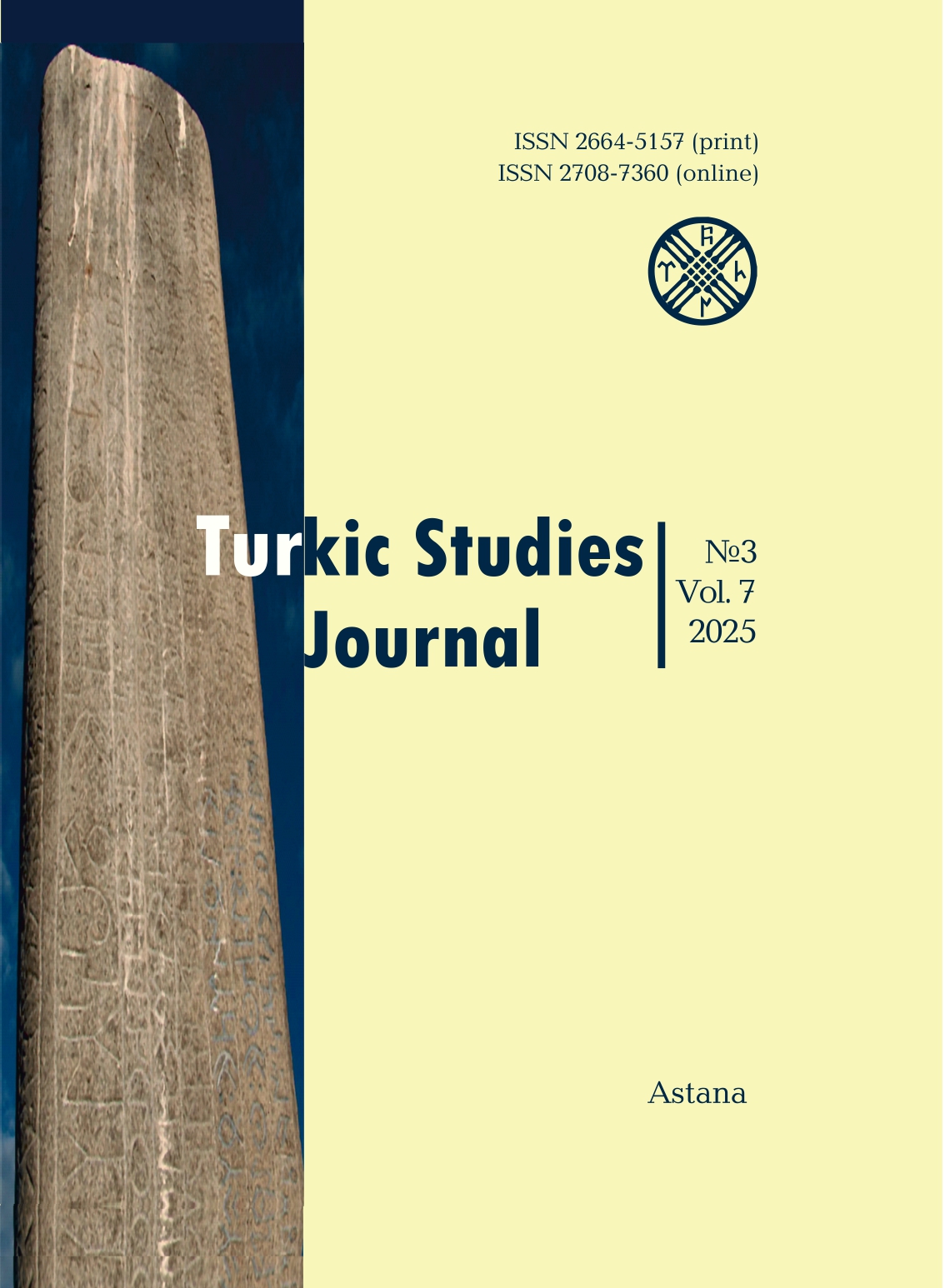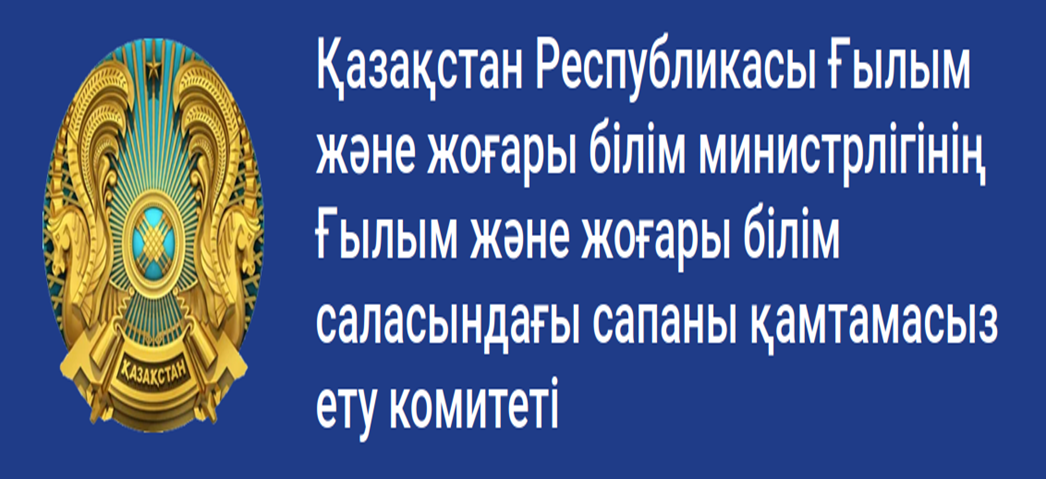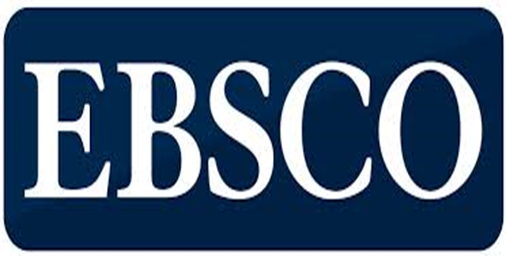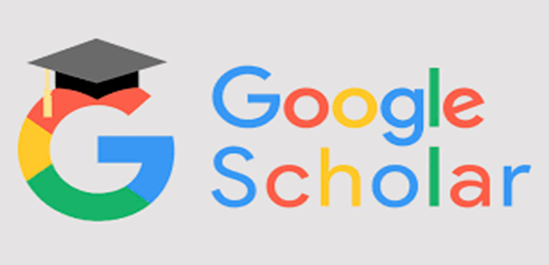The medieval settlement of Nogerbek: Results of archaeological and paleo-economic research
Views: 209 / PDF downloads: 1
DOI:
https://doi.org/10.32523/2664-5157-2025-3-26-52Keywords:
Central Kazakhstan, Ulytau, medieval period, urban culture, Nogerbek settlement, archaeology, citadel, ceramics, archaeozoology, paleo-economyAbstract
The article examines the results of archaeological and paleo-economic studies of the medieval city of Nogerbek, which is located in the Ulytau region. The first archaeological research at the site was conducted by Academician A.Kh. Margulan and S. Zholdasbayev. Archaeological excavations were resumed by G. Akhatov, a researcher at the A.Kh. Margulan Institute of Archaeology, in subsequent years, during 2015-2017. This study presents the findings of the field excavations conducted at the site in 2018 (excavation director: Zh.R. Utubaev), as well as the subsequent laboratory analyses. A morphological analysis of the ceramic material revealed that the vessels were used for both household and kitchen purposes. The majority of the ceramics (83%) were made using the traditional hand-building technique of coiling and fired in open flames. Only 17% of the vessels were carefully made on a potter’s wheel and fired in special kilns. Based on their function, the vessels were classified based on their function as follows: kumsha (3%), köze (21%), large storage jars (14%), small kitchen jars (52%), and handled cups (3%). The most dominant items were the storage köze and small kitchen jars. Comparable ceramics have been frequently unearthed at medieval settlements in the lower reaches of the Syr Darya. The vessels from the city of Zhankent were found to be the most similar in terms of shape and decorative motifs. The morphological and technological characteristics of the ceramic assemblage suggest local production, providing insights into daily life and the economic structure of medieval urban culture. The archaeozoological analysis revealed the taxonomic composition of the osteological material, the anatomical structure of the domestic animals, their age profiles, their meat consumption patterns and any traces of modifications or pathologies on the bones. A total of 503 mammalian bones were studied, 404 (80.3%) identified to species. The assemblage is dominated by domestic animals (98.5%), with a small share of wild fauna (1.5%), including saiga (Saiga tatarica) and wild boar (Sus scrofa). Among domestic species, small ruminants account for the largest share (35.9%), followed by horses (33.2%) and cattle (28.4%), with smaller quantities of camel and dog remains. Slaughter profiles show small ruminants at 1,5-2,5 years, cattle after 2,5 years, and horses mostly over 10 years.
Downloads
Reference
Акишев К.А., Байпаков К.М., Ерзакович Л.Б., 1972. Древний Отрар (топография, стратиграфия, перспективы). Алма-Ата: Наука. 213 с.
Антипина Е.Е., 2013. Модели древнего скотоводства на Кавказе: археозоологические исследования на поселении Кабардинка-2 // Аналитические исследования лаборатории естественнонаучных методов / Отв. ред. Е.Н. Черных, В.И. Завьялов. Вып. 3. Москва: ИА РАН. С. 126-141.
Аржанцева И.А., Тажекеев А.А., 2014. Комплексные исследования городища Джанкент (работы 2011-2014 гг.). Алматы: Изд-во «Арыс». 320 с.
Громова В., 1953. Остеологические отличия родов Capra (козлы) и Ovis (бараны). Руководство для определения ископаемых остатков // Труды комиссии по изучению четвертичного периода. Том Х. Выпуск 1. Москва: Изд-во АН СССР. 123 с.
Жолдасбаев С., 2017. Оседлые поселения казахов в XV–XVIII вв. Астана. 304 с.
Левина Л.М., 1971. Керамика нижней и средней Сырдарьи в I тысячелетии н.э. Москва. 252 с.
Маргулан А.Х., Акишев К.А., Кадырбаев М.К., Оразбаев А.М., 1966. Древняя культура Центрального Казахстана. Алма-Ата: Наука КазССР. 436 с.
Маргулан А.Х., 1978. Остатки оседлых поселений в Центральном Казахстане // Археологические памятники Казахстана. Алматы: Наука. С. 3-37.
Рассадников А.Ю., 2024. Палеопатологические исследования в археозоологии: возможности и значение для археологии // Археология Казахстана. № 4 (26). С. 368-388.
Сенигова Т.Н., 1959. К изучению технических особенностей керамики Низовья Сырдарьи // Труды института истории, археологии и этнографии. Алма-Ата: Изд-во АН Каз. ССР. Т. 7. С. 215-231.
Смагулов Е.А., 2011. Древний Сауран. Алматы: АБДИ Компани. 401 с.
Смаилов Ж.Е., 1997. Памятники археологии Западной Сары-Арки (Средневековые городища и поселения). Балхаш: Жезказганский университет им. О.А. Байконурова. 63 с.
Silver I.A., 1969. The Ageing of Domestic Animals // Science in Archaelogy. New York. Basic books, Inc., Publishers. P. 250-268.
Zeder M.A., Lapham H.A., 2010. Assessing the reliability of criteria used to identify postcranial bones in sheep, Ovis, and goats, Capra // JAS. Vol. 37. Iss. 11. P. 2887-2905.
Zeder M.A., Pilaar S.E., 2010. Assessing the reliability of criteria used to identify mandibles and mandibular teeth in sheep, Ovis, and Goats, Capra // JAS. Vol. 37. Iss. 2. P. 225-242.
Reference
Akishev K.A., Baipakov K.M., Erzakovich L.B., 1972. Drevniy Otrar (topografiya, stratig-rafiya, perspektivy) [Ancient Otrar (topography, stratigraphy, prospects)]. Alma-Ata: Nauka. 213 p. [in Russian].
Antipina E.E., 2013. Modeli drevnego skotovodstva na Kavkaze: arheozoologicheskie issledovanija na poselenii Kabardinka-2 [Models of ancient animal husbandry in the Caucasus: archaeozoological investigations at the site of Kabardinka-2. Analiticheskie issledovanija laboratorii estestvennonauchnyh metodov. Otv. red. E.N. Chernyh, V.I. Zavialov. Vyp. 3. Moscow: IA RAN. P. 126-141. [in Russian].
Arzhantseva I.A., Tazhekeyev A.A., 2014. Kompleksnyye issledovaniya gorodishcha Dzhankent (raboty 2011-2014 gg.) [Comprehensive studies of the Dzhankent settlement (works 2011-2014)]. Almaty: Izd-vo «Arys». 320 p. [in Russian].
Gromova V., 1953. Osteologicheskie otlichia rodov Capra (kozly) i Ovis (barany). Rukovodstvo dlia opredelenia iskopaemyh ostatkov [Osteological differences between the genera Capra (Goats) and Ovis (Sheep): A Guide for identifying fossil remains]. Trudy komissii po izucheniju chetvertichnogo perioda. V. H. Vypusk 1. Moscow: Izd-vo AN SSSR. 123 p. [in Russian].
Zholdasbayev S., 2017. Osedlyye poseleniya kazakhov v XV – XVIII vv [Sedentary settle-ments of the Kazakhs in the 15th – 18th centuries]. Astana. 304 p. [in Russian].
Levina L.M., 1971. Keramika nizhney i sredney Syrdar'i v I tysyacheletii n.e. [Ceramics of the lower and middle Syr Darya in the 1st millennium AD]. Moscow. 252 p. [in Russian].
Margulan A. Kh., Akishev K. A., Kadyrbayev M. K., Orazbayev A. M., 1966. Drevnyaya kultura Tsentralnogo Kazakhstana [Ancient culture of Central Kazakhstan]. Alma-Ata: Science of the Kaz SSR. 436 p. [in Russian].
Margulan A.Kh., 1978. Ostatki osedlykh poseleniy v Tsentral'nom Kazakhstane [Remains of settled settlements in Central Kazakhstan]. Arkheologicheskiye pamyatniki Kazakhstana. Almaty: Nauka. P. 3-37 [in Russian].
Rassadnikov A. Ju., 2024. Paleopatologicheskie issledovanija v arheozoologii: vozmozhnosti i znachenie dlja arheologii [Paleopathological research in archaeozoology: opportunities and implications for archaeology]. Kazakhstan Archeology. No 4 (26). P. 368-388. [in Russian].
Senigova T.N., 1959. K izucheniyu tekhnicheskikh osobennostey keramiki Nizovya Syrdaii [To the study of the technical features of ceramics of the Lower Syrdarya]. Trudy instituta istorii, arkheologii i etnografii. Alma-Ata: Publishing house of the Academy of Sciences of Kaz. SSR. T. 7. P. 215-231 [in Russian].
Smagulov Ye.A., 2011. Drevniy Sauran [Ancient Sauran]. Almaty: ABDI Kompani. 401 p. [in Russian].Smailov Zh.Ye., 1997. Pamyatniki arkheologii Zapadnoy Sary-Arki (Srednevekovyye gorodishcha i poseleniya) [Archaeological monuments of Western Sary-Arka (Medieval settlements and fortifications)]. Balkhash: Zhezkazgan University. 63 p. [in Russian].
Silver I.A., 1969. The Ageing of Domestic Animals. Science in Archaelogy. New York. Basic books, Inc., Publishers. P. 250-268.
Zeder M.A., Lapham H.A., 2010. Assessing the reliability of criteria used to identify postcranial bones in sheep, Ovis, and goats, Capra. JAS. Vol. 37. Iss. 11. P. 2887-2905.
Zeder M.A., Pilaar S.E., 2010. Assessing the reliability of criteria used to identify mandibles and mandibular teeth in sheep, Ovis, and Goats, Capra. JAS. Vol. 37. Iss. 2. P. 225-242.
Downloads
Published
How to Cite
Issue
Section
License
Copyright (c) 2025 Turkic Studies Journal

This work is licensed under a Creative Commons Attribution-NonCommercial 4.0 International License.


























